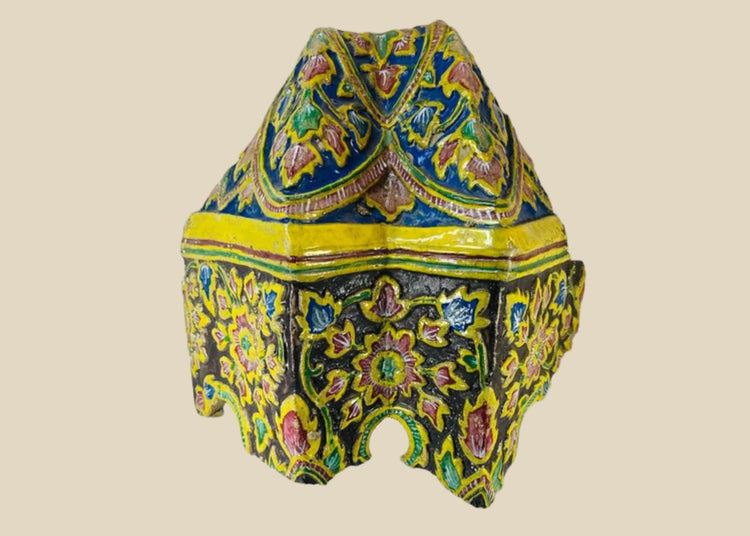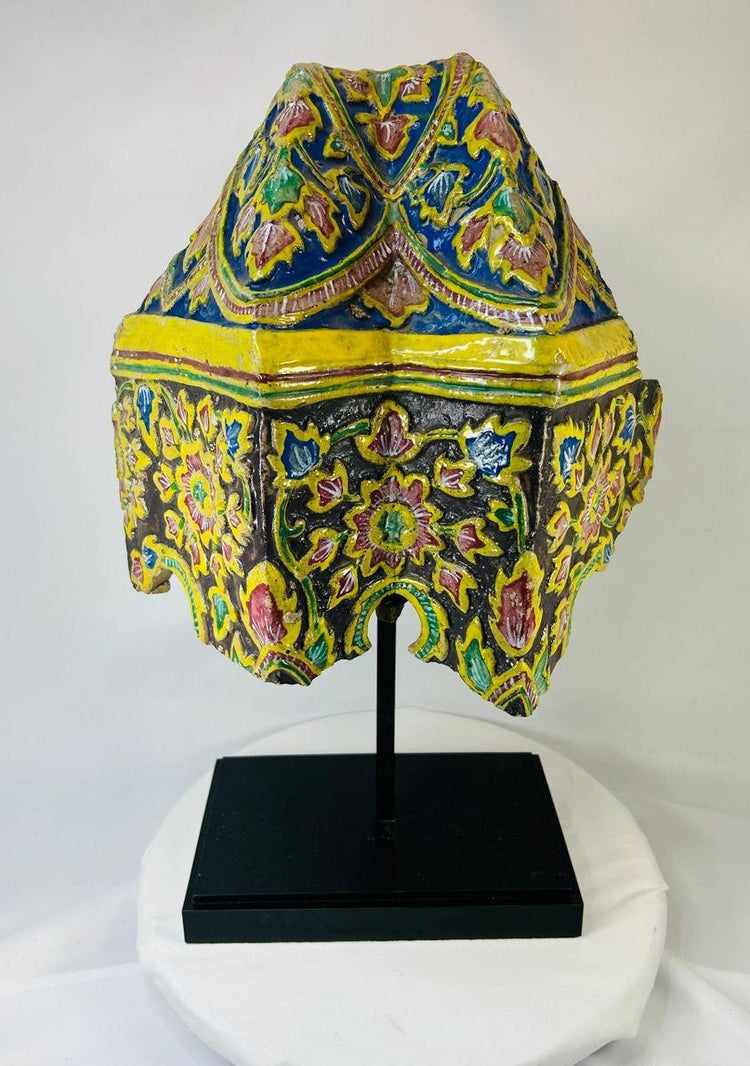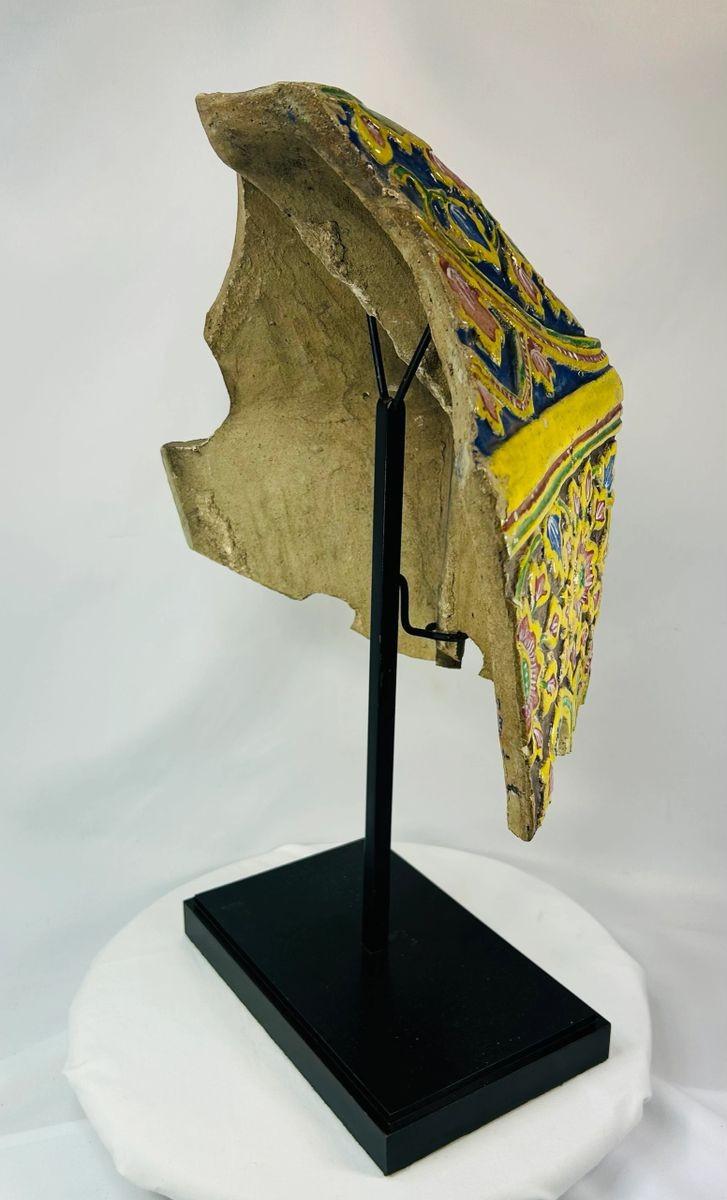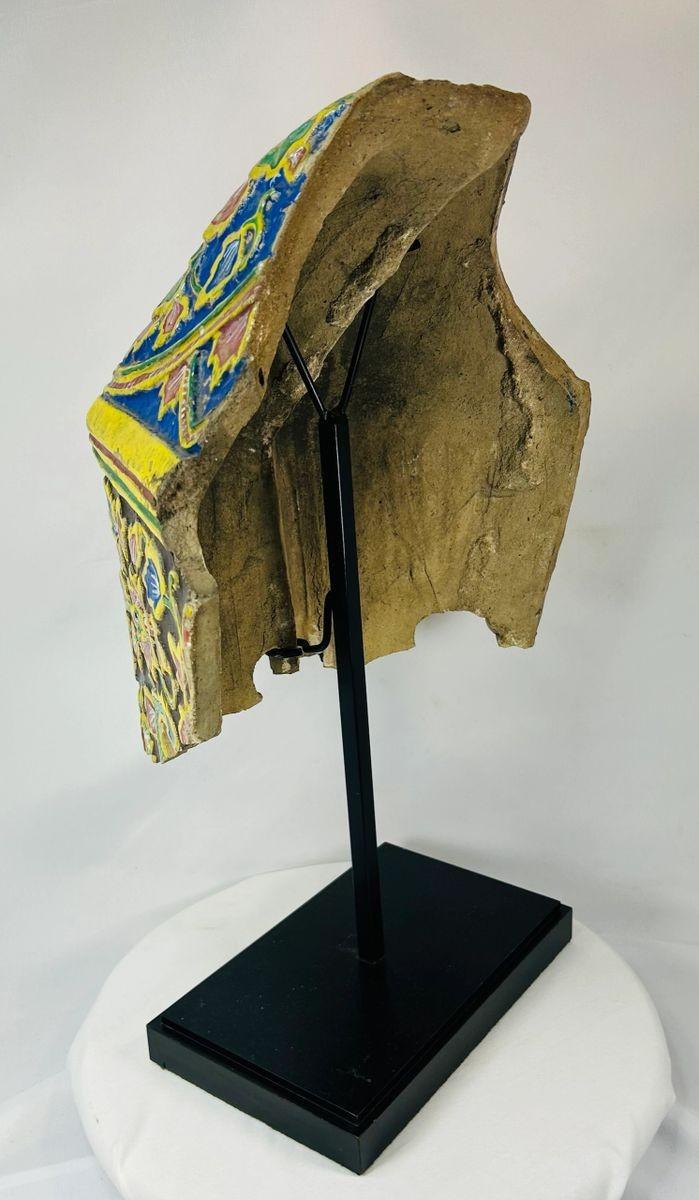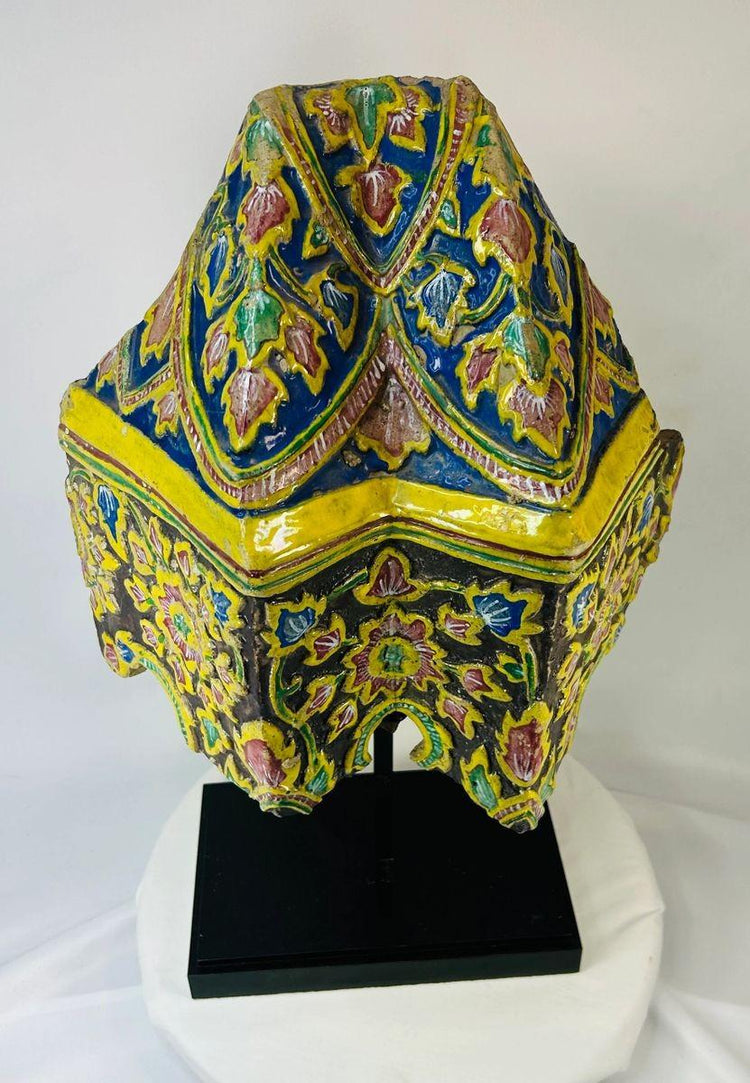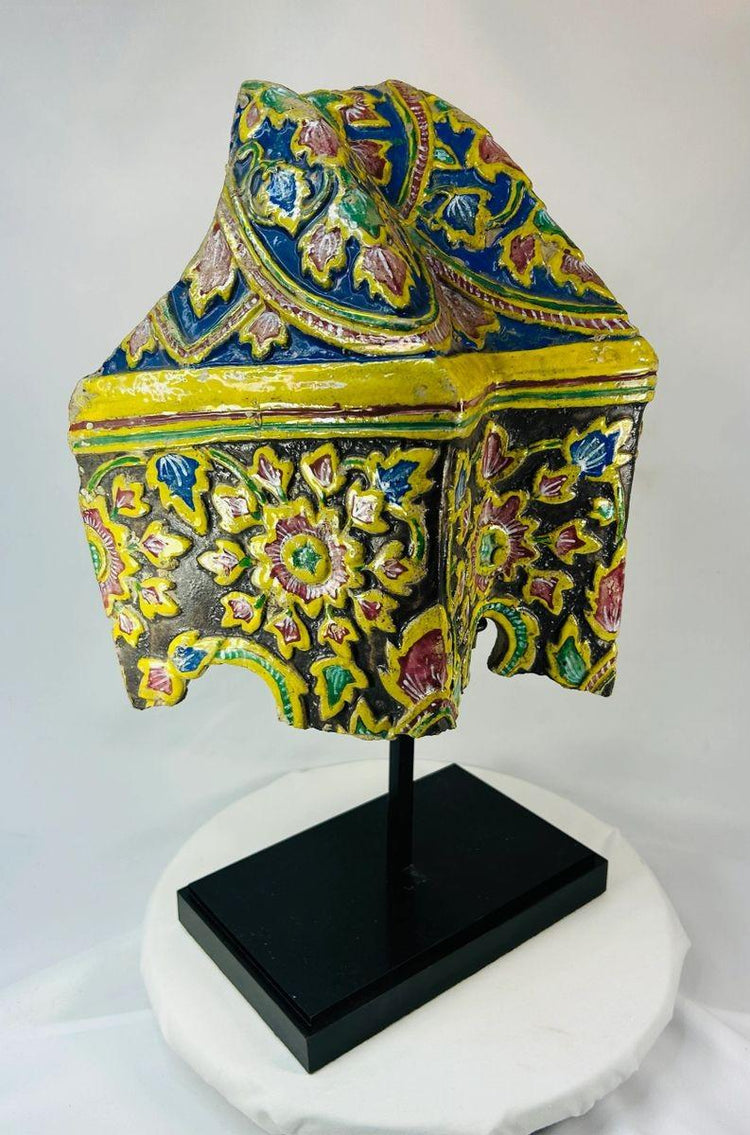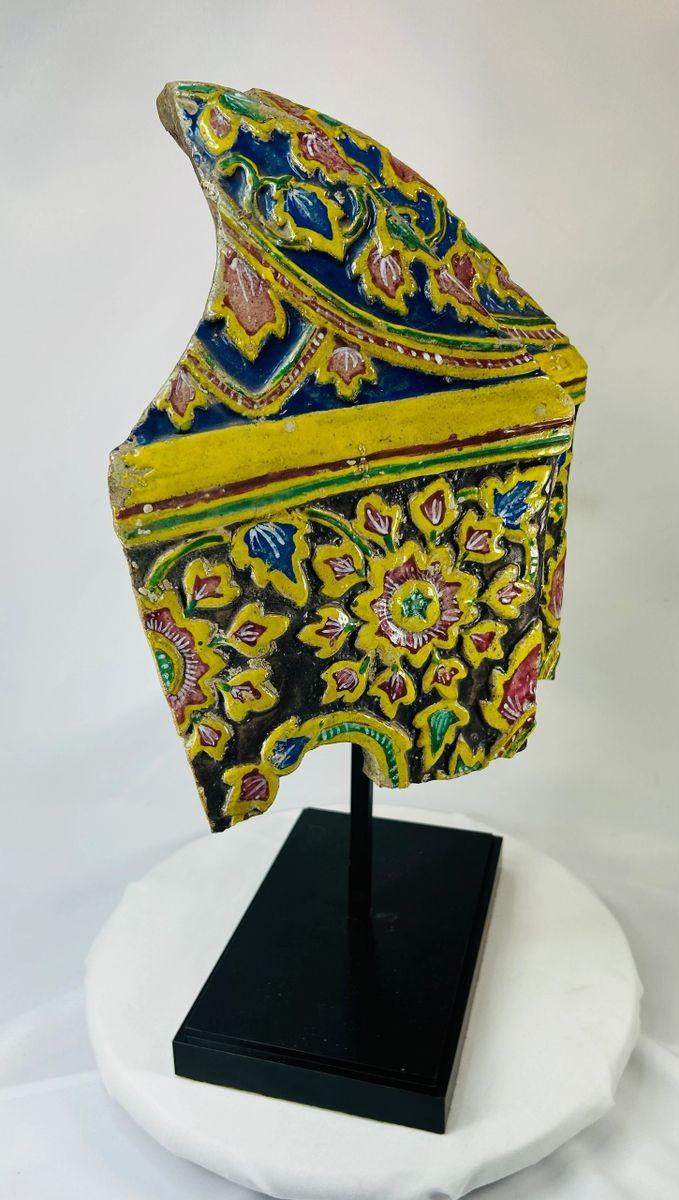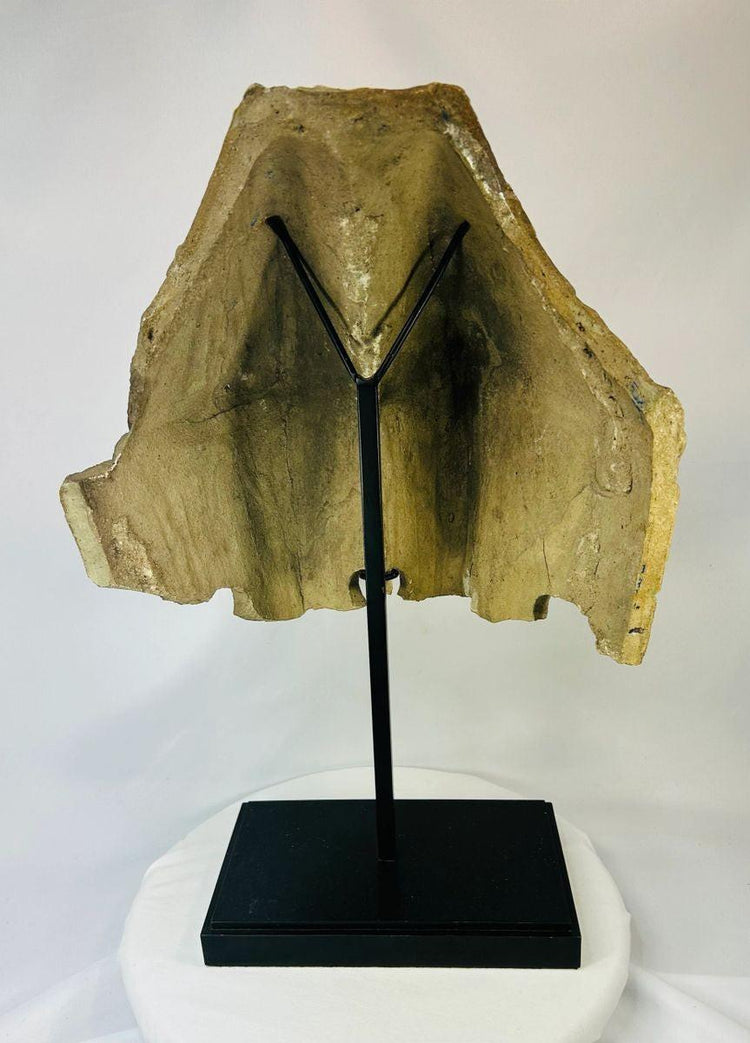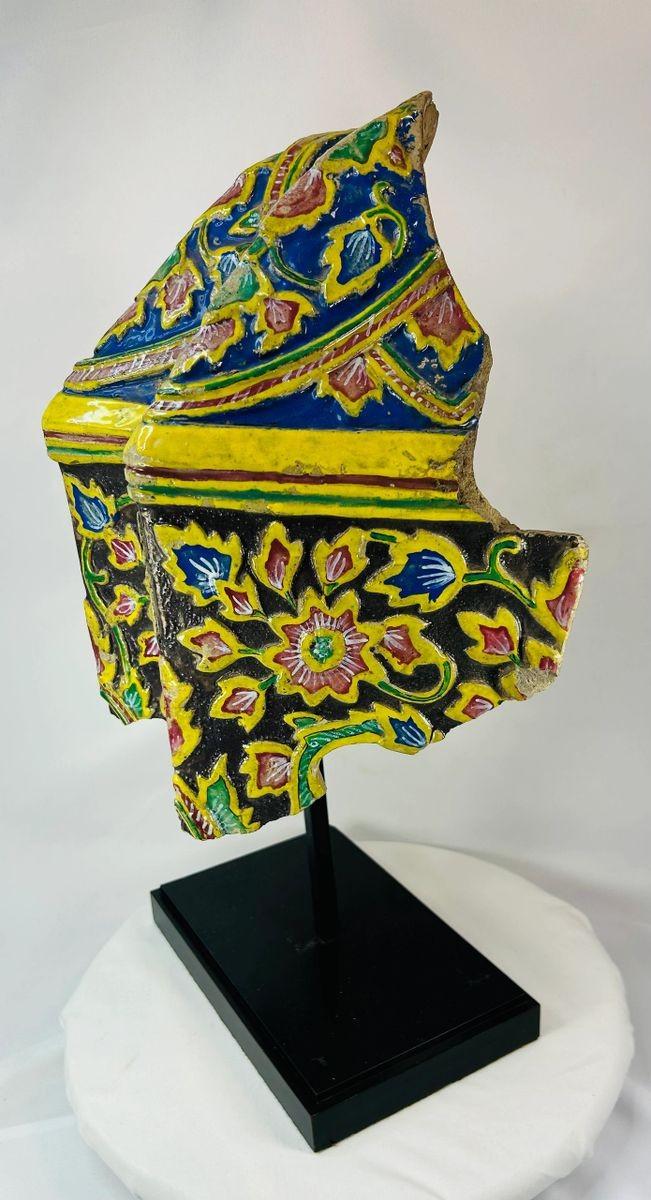Polychrome Ceramic Corner Tile Rattanakosin Period Thailand | Circa 18th Century
Description
More
Less
Historical Context & Origin
Region: Thailand (Rattanakosin Kingdom)
Material: Hand-painted ceramic with polychrome glaze
Period: Late 18th Century, Rattanakosin Period
Description
This remarkable polychrome corner tile originates from the Rattanakosin period (established 1782 under King Rama I), an era celebrated for its flourishing of Thai art, architecture, and Buddhist decorative traditions. Likely produced for use in temples or royal structures, the tile showcases the refined elegance and visual harmony characteristic of Thai craftsmanship during this golden age.
Features
- Bold polychrome glazing with vibrant yellow, blue, green, and pink pigments over a black ground
- Symmetrical floral and geometric patterns executed with meticulous precision
- Raised ridges and floral embellishments, suggesting use as an architectural accent in sacred or royal settings
- Robust ceramic construction with preserved glaze, retaining both color vibrancy and intricate detail
Cultural Significance
Tiles such as this held both decorative and spiritual meaning, reflecting Buddhist and Hindu artistic influence during the Rattanakosin period. Their integration into temples and palaces elevated architecture into a sacred visual experience, embodying the harmony, protection, and grandeur sought in Thai religious art.
Condition
The tile remains in excellent condition with vibrant glaze colors, natural patina, and minor wear consistent with age. The reverse side reveals the strong ceramic body, confirming traditional production methods and authenticity. Its well-preserved state makes it a rare and collectible artifact.
Dimensions (approximate)
Height: 19.25 in
Width: 14 in
Depth: 13 in
Age
Over 200 years old
Learn More
Read the National Museum Bangkok’s Insight on the Rattanakosin Period
Description
Historical Context & Origin
Region: Thailand (Rattanakosin Kingdom)
Material: Hand-painted ceramic with polychrome glaze
Period: Late 18th Century, Rattanakosin Period
Description
This remarkable polychrome corner tile originates from the Rattanakosin period (established 1782 under King Rama I), an era celebrated for its flourishing of Thai art, architecture, and Buddhist decorative traditions. Likely produced for use in temples or royal structures, the tile showcases the refined elegance and visual harmony characteristic of Thai craftsmanship during this golden age.
Features
- Bold polychrome glazing with vibrant yellow, blue, green, and pink pigments over a black ground
- Symmetrical floral and geometric patterns executed with meticulous precision
- Raised ridges and floral embellishments, suggesting use as an architectural accent in sacred or royal settings
- Robust ceramic construction with preserved glaze, retaining both color vibrancy and intricate detail
Cultural Significance
Tiles such as this held both decorative and spiritual meaning, reflecting Buddhist and Hindu artistic influence during the Rattanakosin period. Their integration into temples and palaces elevated architecture into a sacred visual experience, embodying the harmony, protection, and grandeur sought in Thai religious art.
Condition
The tile remains in excellent condition with vibrant glaze colors, natural patina, and minor wear consistent with age. The reverse side reveals the strong ceramic body, confirming traditional production methods and authenticity. Its well-preserved state makes it a rare and collectible artifact.
Dimensions (approximate)
Height: 19.25 in
Width: 14 in
Depth: 13 in
Age
Over 200 years old
Learn More
Read the National Museum Bangkok’s Insight on the Rattanakosin Period
You May Also Like
























